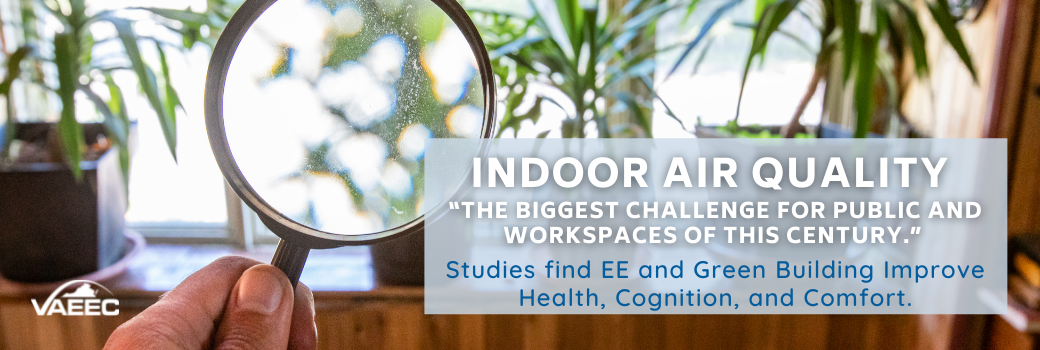Study: Indoor Air Quality is “the biggest challenge for public spaces and workspaces of this century.”
America has a building problem.
Americans spend up to 90% of their lives indoors, in buildings that were not designed with ventilation in mind. The quality of indoor air affects all aspects of life – health, school and job performance, cognitive abilities, and energy bills.
 While COVID-19 brought indoor air quality into sharp focus, many of the most common – and often dangerous – communicable illnesses are spread through airborne transmission. Additionally, chronic illnesses like asthma, cardiovascular disease, and COPD are exacerbated by factors in the living environment. Comparative risk studies performed by EPA’s Science Advisory Board (SAB) have consistently ranked indoor air pollution among the top five environmental risks to public health. In fact, there is over thirty years of research on the effects of indoor air quality on human health and behavior.
While COVID-19 brought indoor air quality into sharp focus, many of the most common – and often dangerous – communicable illnesses are spread through airborne transmission. Additionally, chronic illnesses like asthma, cardiovascular disease, and COPD are exacerbated by factors in the living environment. Comparative risk studies performed by EPA’s Science Advisory Board (SAB) have consistently ranked indoor air pollution among the top five environmental risks to public health. In fact, there is over thirty years of research on the effects of indoor air quality on human health and behavior.
Improvements to air filtration and ventilation have lagged behind other building systems for years, leading to what Dr. Vin Gupta, the Chief Health Officer at Amazon, calls “the biggest challenge for public and workspaces of this century.”
“Go back 100 years. The big issue that was killing people were communicable diseases passed fecal to oral,” Gupta said. This issue led to improvements in sanitation and waste disposal across the world. “100 years later, it is how do we ventilate public space and workplaces.”
Building owners and residents need to prioritize improved indoor air quality in their spaces. “Treat indoor air quality like a must-have work benefit, not a trendy perk” said Prof. Joseph Allen, associate professor at the Harvard T.H. Chan School of Public Health. Allen is also leading ongoing research on the correlation between indoor air quality and health.
Allen was a leading author on a recent study that explored the coexistence of energy efficiency and health. The third in a series that focused on the effects of air quality on cognitive function, researchers concluded that cognitive scores averaged between 61-101% higher in green building designs over conventional buildings. The authors stated these findings have “wide-ranging implications” as the study mimicked many typical indoor environments.
Typically, increases in ventilation and filtration result in an increase in energy use, but by leveraging equipment controls and efficient equipment, these programs help building owners and residents keep energy increases manageable.
George Barnes, Account Manager for Complex Solutions for Trane said, “the challenge is to complete [measures] in an energy efficient manner. If done correctly, spaces will be safer, occupants will be healthier, and any cost increases will be mitigated.”
Energy efficiency and green building also reduces absenteeism in schools and the workplace, improves workforce retention and productivity, and contributes to better comfort for residents and workers. As employers bring workers back into physical offices, it is critical that everyone – building owners, CEOs, employees, and more – keep a keen eye on the health of the buildings and the people within them.

